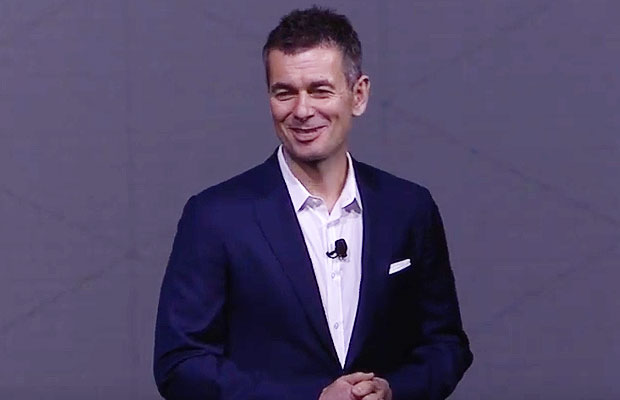YouTube Chief Business Officer Robert Kyncl on Thursday laid out the direction the service plans to take this year, including new partnerships withGoPro to support 360-degree video content and 4K HDR, or high dynamic range, video.
So-called cord cutters are having an impact on streaming video services, including those of competitors such as Amazon and YouTube, he said during his keynote address at CES 2016.
The amount of time people spend watching digital video is about an hour and 15 minutes a day and is growing 25 percent year on year, Kyncl noted.
“Digital video is exploding,” he said. “It has overtaken social media as the top online activity.”
With that in mind, it isn’t hard to see why YouTube is seeking to widen its appeal beyond fast-trending videos, and its newly announced partnerships and video support could be crucial to its growth. The service will be built into smart TVs alongside offerings from Amazon, Hulu and Netflix.
“YouTube is going to launch support for HDR playback this year,” said Mariana De Felice, a YouTube spokesperson.
“At the show floor, partners such as Samsung, LG and Hisense were showcasing YouTube in 4K HDR,” she told the E-Commerce Times.
YouTube’s Full 360
Kyncl was joined at the keynote by GoPro CEO Nick Woodman to highlight the companies’ partnership.
GoPro took the moment to announce that it will release a casual spherical camera as a way to help expand outside the extreme sports and adrenaline junkie market, which could result in greater adoption of 360-degree video creation.
“360 is what is used in virtual reality, and YouTube’s popularity and sheer number of users really could make an impact on this technology, and this will help promote awareness and adoption of 360 video,” said Greg Sterling, vice president of strategy and insight at theLocal Search Association.
What YouTube is “doing for VR is the most important that can happen to the technology for it to be successful,” added Colin Dixon, principal analyst atnScreenMedia.
“This partnership with GoPro does something that is pretty unique for video technology, as it was absent for 3-D and even HD before it,” he told the E-Commerce Times.
It could allow for the creation of a complete ecosystem that offers most of the features needed to make the content, Dixon noted.
“You can get started with a GoPro that will cost just $500, and you could be making videos soon after,” he said.
“The people that are likely to use this are those already using GoPro for extreme sports — the stuff that is exciting to watch,” he added. “This could result in a flow of exciting, compelling content that showcases the technology.”
360 on Displays
However, YouTube and GoPro may still have some issues to resolve, at least in terms of ensuring the best way to present the content. VR is something best experienced via a special headset, and the content isn’t so easily experienced — at least not in all its glory — on a traditional flat display.
“360 works well in headsets and it is awkward on a phone’s screen, but less awkward on a PC desktop,” the Local Search Association’s Sterling told the E-Commerce Times. “It’s still meant for headsets, so how it works could very well depend on the content.”
That many not hamper early adopters, however.
“This is really a trifecta for the early adopters,” said Dixon.
“It will be cheap to produce, provide a flow of good content, and cheap to try it out,” he added. “As a result, it will be almost the most important thing to happen to VR, bar none — $500 and you are in the VR business.”
Technology Platform
As consumers adopt larger TVs with greater resolution, people watching in their living rooms will expect more than low-resolution videos.
To compete with Amazon’s and Netflix’s HDR video support, YouTube will need to remain at the forefront of video technology.
“YouTube’s adoption of new technologies, which also includes VR, is important to the overall ecosystem,” said Joel Espelien, senior analyst atThe Diffusion Group.
“Device companies have to have YouTube app support on their platforms, so in this sense it’s a big positive,” he told the E-Commerce Times.
One issue is that YouTube’s content is all over the map and is often fast trending but also fast to burn out, according to Espelien.
“From this point of view, content providers with more focus — whether a sports league or someone like Netflix producing originals — [are] better equipped to create a tight feedback loop between new technologies and the content creation process itself,” he added.
The size of the audience could be the key when all is said and done, noted Sterling.
“YouTube can have a significant impact on the technologies, as it is one of two or three destinations that have massive online audience,” he added. “Along with Netflix and Facebook, it is where people go to find video online.”






















































I said that you could get a VR camera for $500. That’s wrong, it’s more like $2K. You buy the VR camera mount for $500 and a a handful of cheap goPro cameras to fit in it. GoPro will release a single VR camera called Odyssey soon, rumored to be $15k.